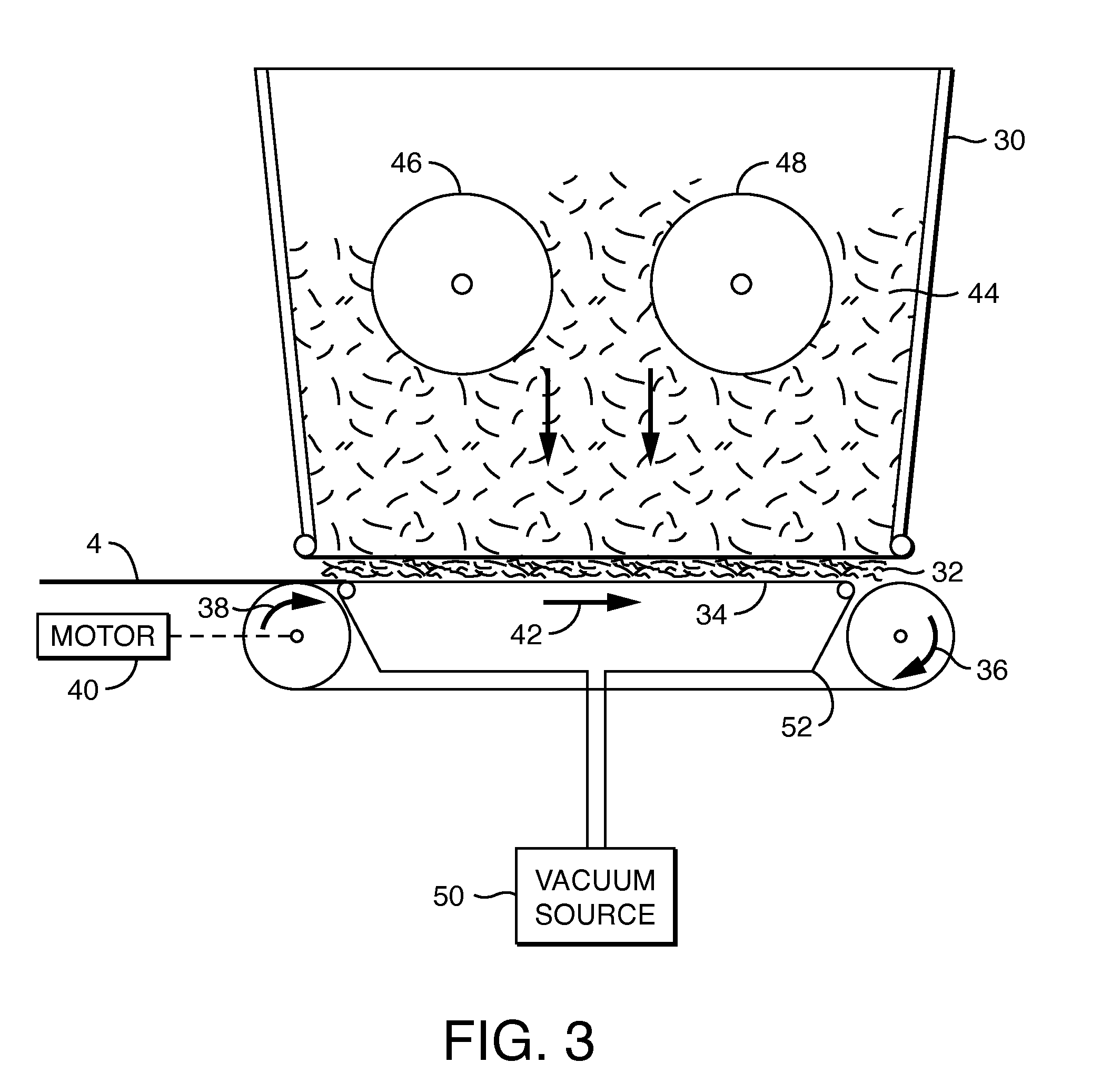Dispersible wet wipes constructed with a plurality of layers having different densities and methods of manufacturing
a technology of wet wipes and layers, applied in the direction of detergent compounding agents, paper/cardboard articles, inorganic non-surface active detergent compositions, etc., can solve the problems of quick breakdown in sewers or septic systems, product dispersibility is not good, and the industry that provides disposable items is plagued by disposability problems
- Summary
- Abstract
- Description
- Claims
- Application Information
AI Technical Summary
Problems solved by technology
Method used
Image
Examples
example 1
[0137]Examples A-F of the wipe substrate are prepared as described below. The first layer of Examples A-F is uncreped through-air dried tissue. The second layer of Examples A-F is an airlaid nonwoven. The first layer basesheet is made using an uncreped through-air-dried tissue making process in which a headbox deposits an aqueous suspension of papermaking fibers between forming wires. The newly-formed web is transferred from the forming wire to a slower moving transfer fabric with the aid of a vacuum box. The web is then transferred to a through-air drying fabric and passed over through-air dryers to dry the web. After drying, the web is transferred from the through-air drying fabric to a reel fabric and thereafter briefly sandwiched between fabrics. The dried web remains on the fabric until it is wound up into a parent roll.
[0138]To form the tissue, a headbox was employed, through which the 100 percent softwood fibers are pumped in a single layer. The fiber was diluted to between 0...
example 2
[0143]For example 2, two examples were prepared as described in Example A-F and compared to basesheet made of only uncreped through-air dried tissue, a basesheet made of only airlaid, KLEENEX® COTTONELLE FRESH® Flushable Moist Wipes and CHARMIN® Flushable Moist Wipes. The Examples were tested for density in each layer, basis weight in each layer, caliper cup crush, and plate stiffness. Illustrative results are set forth below in Table 2.
[0144]
TABLE 2BasisBasisPlateDensityDensityWeightWeightBinder CupStiff-(Layer 1)(Layer 2)(gsm)(gsm)add onCaliperCrushnessExample(g / ccm)(g / ccm)(Layer 1)(Layer 2)(%)(mm)(g)(N mm)Comparative A0.11—72—19 0.55830.72(COTTONELLEFRESH ®Comparative B0.125—65— 0 0.52520.45(Charmin ®)Comparative C0.14—100—19 0.571251.09(Airlaid)Comparative D0.30—75— 5%0.50640.56(UCTAD)G0.300.097515 5%0.72340.30H0.300.057515 5%0.87220.10
[0145]As can be seen by Table 2 above, one unique feature of the wipes described herein is a high caliper with lower stiffness than the com...
PUM
| Property | Measurement | Unit |
|---|---|---|
| density | aaaaa | aaaaa |
| density | aaaaa | aaaaa |
| density | aaaaa | aaaaa |
Abstract
Description
Claims
Application Information
 Login to View More
Login to View More - R&D
- Intellectual Property
- Life Sciences
- Materials
- Tech Scout
- Unparalleled Data Quality
- Higher Quality Content
- 60% Fewer Hallucinations
Browse by: Latest US Patents, China's latest patents, Technical Efficacy Thesaurus, Application Domain, Technology Topic, Popular Technical Reports.
© 2025 PatSnap. All rights reserved.Legal|Privacy policy|Modern Slavery Act Transparency Statement|Sitemap|About US| Contact US: help@patsnap.com



